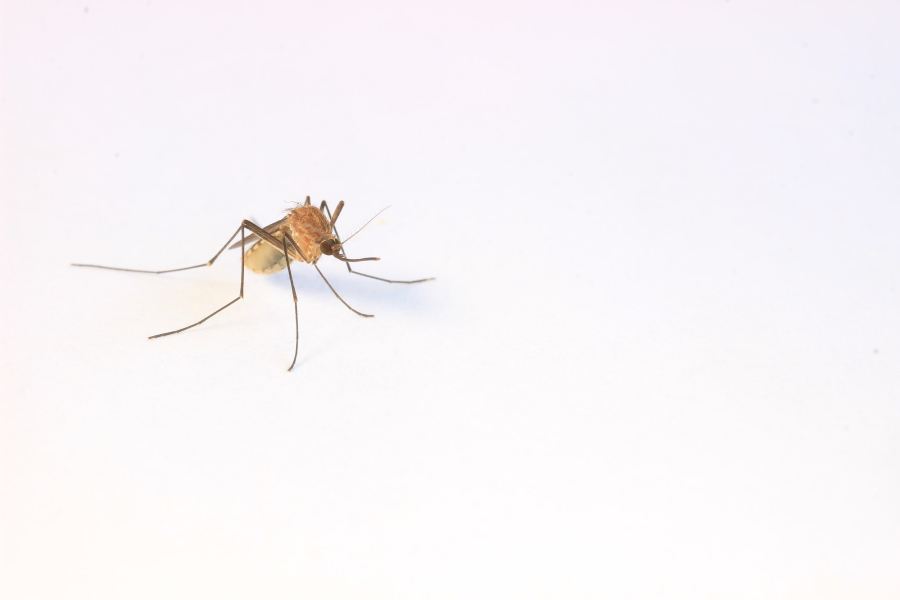Bats and mosquitoes are two distinct creatures that share a complex relationship in the natural world. As pesky disease carriers, mosquitoes have long plagued humans and animals alike. Meanwhile, bats, often misunderstood and maligned, play a crucial role as predators in various ecosystems. This article delves into the intriguing connection between bats and mosquitoes, exploring the extent to which bats consume these tiny pests. By understanding this interaction, we can better appreciate the ecological significance of bats and their potential as a natural form of mosquito control.
How Many Mosquitoes Do Bats Eat?
The number of mosquitoes bats eat varies significantly depending on factors such as the bat species, its habitat, and seasonal conditions. On average, a single bat can consume hundreds of mosquitoes per night, making them valuable natural predators in controlling mosquito populations.
Bat Species Known For Mosquito Consumption
Certain bat species have gained recognition for their significant mosquito consumption, showcasing their crucial role in managing mosquito populations and reducing the risk of mosquito-borne diseases. Among these bat species are:
Found throughout North America, the little brown bat is a voracious mosquito predator. With their agile flight and echolocation abilities, they can effectively locate and catch mosquitoes in mid-air. A single little brown bat can consume up to 600 mosquitoes in just one hour, making them valuable assets in mosquito control efforts.
Another common species across North America, the big brown bat exhibits a varied diet that includes mosquitoes. Their larger size allows them to consume larger insects, making them efficient predators of both mosquitoes and other pest species. Big brown bats are particularly active during warm summer nights when mosquito populations are at their peak.
Native to the Americas, these bats are known for their vast migrations and massive colonies. They play a vital role in controlling mosquito populations in agricultural areas and cities. Brazilian free-tailed bats have been observed consuming thousands of mosquitoes each night, significantly reducing the nuisance and health risks associated with these insects.
This diverse group of bats, found in various regions globally, includes several species known for consuming mosquitoes. Pipistrelle bats have adapted to urban environments, making them valuable allies in reducing mosquito-borne diseases in densely populated areas.
The Ecological Impact Of Bats On Mosquito Populations
The ecological impact of bats on mosquito populations is of immense significance, as bats play a vital role in regulating these pesky and disease-carrying insects. Their predation on mosquitoes serves as a natural form of pest control with various ecological implications:
- Mosquito Control: Bats act as natural predators of mosquitoes, consuming substantial quantities of these insects each night. By feeding on adult mosquitoes, bats help limit their population growth, reducing the overall number of potential disease vectors. This control of mosquito populations helps maintain a more balanced ecosystem and minimizes the risks of mosquito-borne diseases for both humans and other animals.
- Trophic Interactions: The consumption of mosquitoes by bats creates a trophic cascade, affecting the abundance and behavior of other species in the food chain. As mosquito populations decrease due to bat predation, the prey for other predators may increase, leading to further ecological adjustments within the ecosystem.
- Pollination and Seed Dispersal: Some bat species are also important pollinators and seed dispersers. Their activities contribute to plant diversity and ecosystem health, positively impacting the availability of resources for various organisms, including mosquitoes and other insects.
- Ecosystem Resilience: Bats’ role in mosquito control enhances the resilience of ecosystems by minimizing the potential disruptions caused by mosquito-borne diseases. This, in turn, can lead to more stable and functional ecological communities, supporting the survival and diversity of various plant and animal species.
- Conservation of Bats: As bats continue to face threats such as habitat loss and disease, understanding their significance in mosquito control reinforces the importance of bat conservation efforts. Preserving bat populations ensures the continuity of their ecological contributions, including mosquito regulation, and maintains the overall balance of ecosystems.
Implications For Mosquito Control Strategies
The implications of bats’ role in mosquito control have significant ramifications for developing effective and sustainable mosquito control strategies:
- Eco-friendly Pest Management: Understanding the natural predation of mosquitoes by bats highlights the potential for eco-friendly pest management. Instead of relying solely on chemical pesticides, incorporating and preserving bat habitats can provide a natural and non-toxic means of mosquito control.
- Integrated Pest Management (IPM): Integrated Pest Management, which combines multiple strategies to control pests, can benefit from bats’ involvement. Integrating bat conservation efforts alongside other approaches such as biological controls, habitat modification, and targeted pesticide use can create a more comprehensive and efficient mosquito control strategy.
- Public Health and Disease Management: By reducing mosquito populations, bats contribute to the prevention of mosquito-borne diseases like malaria, dengue fever, and West Nile virus. Incorporating bat-friendly measures into public health campaigns can be an additional layer of protection against these diseases.
- Habitat Conservation and Restoration: Preserving natural habitats and restoring degraded ecosystems that support bat populations can enhance their ability to control mosquito populations. Conserving caves, forests, wetlands, and other bat-friendly habitats ensures the availability of suitable roosting sites and ample insect prey.
- Education and Public Awareness: Raising awareness about the ecological significance of bats in mosquito control is essential. Educating the public about bats’ positive contributions can help dispel misconceptions and foster a positive attitude toward bat conservation.
Myths And Misconceptions
Myths and misconceptions surrounding bats and their association with mosquitoes have contributed to negative attitudes toward these beneficial creatures. Addressing these misconceptions is crucial for promoting bat conservation and understanding their ecological significance:
- Bats are Bloodsuckers: One of the most common myths is that all bats are bloodsuckers. In reality, only three species out of over 1,300 bat species are known as “vampire bats,” and they primarily feed on the blood of livestock, not humans.
- Bats are Dangerous: Bats are often portrayed as dangerous and aggressive animals that attack humans. In truth, bats are generally shy and prefer to avoid human contact. Cases of bats transmitting diseases to humans are rare, and their presence should not be cause for undue alarm.
- Bats are Blind: Another misconception is that bats are blind and rely solely on echolocation to navigate. While they primarily use echolocation for hunting, most bats have functional eyes and can see in low-light conditions.
- Bats are Dirty: Some believe that bats are dirty or carry a lot of diseases. In reality, bats, like all animals, can harbor certain diseases, but they are not inherently filthy creatures. Most bats are beneficial to the environment and have minimal impact on human health.
- Bats are Pests: Bats are sometimes wrongly labeled as pests due to their roosting habits and association with dark places like caves and attics. However, they play a vital role in maintaining ecosystem balance and should be viewed as valuable contributors to the environment.
Final Words
In conclusion, debunking myths and misconceptions about bats is paramount to appreciating their vital role in mosquito control and maintaining ecological balance. These fascinating creatures are not the villains portrayed in popular culture but rather essential allies in curbing mosquito-borne diseases and promoting sustainable pest management. By understanding and valuing bats as nature’s pest controllers, we can forge a harmonious relationship with these remarkable animals, protect their habitats, and ensure a healthier and more resilient environment for both wildlife and humans alike.
FAQ’s
Are All Bats Effective Mosquito Predators?
No, not all bats primarily consume mosquitoes. While some bat species, like the little brown bat and the big brown bat, have mosquito-rich diets, others may prefer different prey, such as fruits, nectar, or insects like moths.
Can Bats Completely Eradicate Mosquito Populations?
While bats play a crucial role in mosquito control, they cannot completely eradicate mosquito populations. Mosquitoes are prolific breeders, and other factors, such as climate, habitat, and the presence of other predators, also influence mosquito numbers.
Do Bats Only Consume Adult Mosquitoes?
Bats predominantly feed on adult mosquitoes, but they may also consume other mosquito life stages, such as larvae and pupae. Their diet often depends on the availability of different mosquito life stages in their environment.
Are Bats Affected By Mosquito-Borne Diseases?
Some bat species can be affected by certain mosquito-borne diseases, but their natural resistance and roosting behaviors often limit the impact of these diseases on bat populations. In contrast, mosquitoes pose significant health risks to humans and other animals.
How Can I Attract Bats To My Property For Mosquito Control?
Creating a bat-friendly habitat can attract these natural mosquito predators. Plant native vegetation, install bat houses, and avoid using chemical pesticides, as they can harm bats and their insect prey. Providing a water source and ensuring a dark and quiet roosting area can also entice bats to make your property their home.








